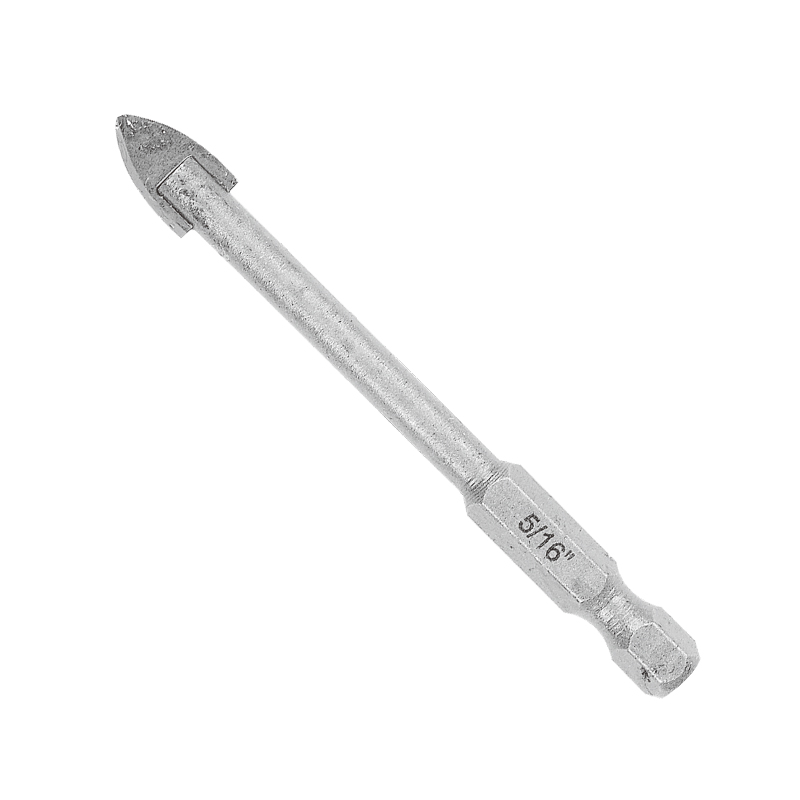2025-08-08
Introduction: The Fragile Nature of Glass and Drilling Challenges
Drilling into glass is inherently challenging because of its brittle nature. Unlike metals or plastics, glass lacks flexibility and cannot absorb significant mechanical stress, making it prone to cracking or shattering under improper drilling conditions. A Glass Drill Bit is designed specifically to address these challenges by enabling more controlled and precise drilling. Nevertheless, the risk of cracks or breakage remains a critical concern for professionals and hobbyists alike. Understanding the factors that contribute to glass damage during drilling can help reduce the likelihood of failure and produce clean, precise holes.

Why Cracks and Breakages Occur During Glass Drilling
Glass is a hard yet brittle material. When subjected to mechanical forces, such as those applied during drilling, stress concentrates around the drill bit's contact area. If this stress exceeds the glass’s tensile strength, cracks can initiate and propagate, sometimes resulting in complete breakage. The risk is heightened when drilling too fast, applying excessive pressure, or using an inappropriate drill bit. Additionally, existing flaws or micro-cracks in the glass surface can act as weak points where cracks more easily form. Therefore, the process demands careful control of drilling parameters and the use of suitable equipment.
How a Glass Drill Bit Reduces the Risk of Damage
A Glass Drill Bit is typically made from materials such as tungsten carbide or coated with industrial diamonds, enabling it to grind rather than cut the glass surface. This grinding action generates less mechanical shock and reduces the risk of inducing cracks. Furthermore, the shape of the bit, often conical or spear-shaped, allows for a gradual penetration, reducing stress concentration. High-quality glass drill bits ensure smoother operation, and when combined with proper drilling techniques, they significantly lower the chances of cracking or breakage.
Key Factors That Influence Cracking During Drilling
Several factors affect whether cracking will occur when drilling glass. Drill speed and pressure are paramount; excessively high speeds generate heat, which can cause thermal expansion and subsequent cracking. Applying too much force increases mechanical stress, causing fractures. Secondly, cooling is vital—using water or a lubricant reduces heat buildup, helping prevent cracks. Thirdly, how the glass is supported during drilling matters; inadequate backing can cause vibrations and stress points. Lastly, the type and thickness of the glass influence its susceptibility to cracking, with tempered glass generally more resistant than standard annealed glass.
Practices to Prevent Cracks and Breakage
To reduce the risk of cracking or breakage, it is essential to follow practices when using a Glass Drill Bit. Start with a slow drill speed and gentle pressure to create a small pilot hole. Gradually increase speed while maintaining consistent, light pressure throughout the drilling process. Use water or a coolant to keep the bit and glass surface cool. Secure the glass firmly on a flat, supportive surface to prevent movement and vibration. Additionally, avoid drilling near the edges of the glass where stresses are naturally higher and cracking is more likely.
Managing the Risk of Damage When Drilling Glass
In summary, while drilling glass with a Glass Drill Bit inherently carries some risk of cracks or breakage due to the fragile nature of the material, these risks can be significantly mitigated through the use of specialized bits and careful drilling techniques. Controlling drill speed and pressure, using proper cooling, and providing adequate support all contribute to safer and cleaner drilling. Understanding the behavior of glass under mechanical stress and employing recommended practices allows users to achieve precise holes without compromising the structural integrity of the glass. Therefore, cracking and breakage are not inevitable but depend on skill, equipment quality, and adherence to procedures.